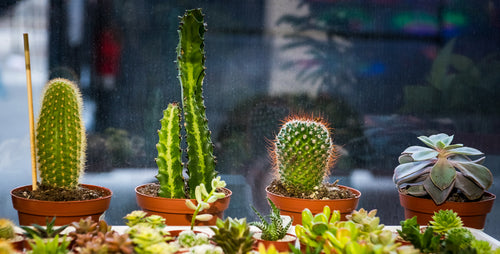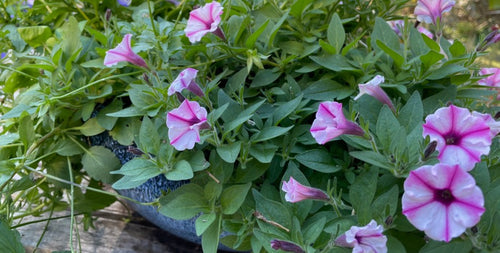One of the biggest challenges about writing about gardening in the United States is that gardening is so different from region to region. So very different! Take perennials, for example. In the Midwest, it was a straightforward thing -- perennials are the ones you plant, they go dormant in winter, and then come back from the roots fresh and new the following spring.
Here in Florida, some plants that I grew up with as annuals (ones that wouldn’t survive the winter) now live and grow for years, making them perennials. Here are five of my favorite perennials that bloom and bloom in my garden.

Vinca
I have some easy-care vinca (Catharanthus, if you prefer botanical names) that’s been blooming for about two years in my garden. I appreciate the fact that it’s delightfully easy to care for: I don’t have to deadhead it, cut it back, or do anything special with it. For me, it flowers almost constantly all year. You can’t beat that for a bloom cycle! Drought tolerant, it holds up well to harsh weather. The only times I’ve seen a problem are when we get lots of heavy rain; it sulks when things stay wet.
Vinca blooms in a wide range of colors, including pinks, lavenders, purples, white, and reds. There are upright and trailing types, so it’s easy to get just the look you’re going for.
More: Check out our Vinca Guide!
Curcuma
Here’s a plant that actually behaves like the perennials I’m used to. It’s an exotic beauty that has lush leaves and tulip-like bracts that bear tiny fragrant purple flowers. Here in South Florida, mine start to emerge from the soil in May, then bloom continually through October or so when they go dormant for the winter. So far, my clusters of curcuma have been coming back for three years. A member of the ginger family, you may also see it called tulip ginger.
Most curcuma varieties bloom in shades of pink and white and grow about 2 feet tall. I find mine look better where I grow them in some afternoon shade rather than all-day sun. If you live in Northern Florida, a layer of mulch over the soil can be helpful if you have a cold spell in winter.


Gerbera
There’s a series of gerbera daisy (called Garvinea) we test every year in the Costa Farms Trial Garden. They’re regularly among the best-performing plants in the entire Trial Garden, so I bought a few to bring home. Unlike my experience with gerberas up north, the Garvinea types bloom all year long and nonstop at that (when I keep them fertilized, that is). The daisy-shaped flowers are great for bouquets and attract bees and butterflies.
Garvinea-type gerberas bloom in a wide range of shades, including yellow, orange, red, pink, purple, and white. Most grow about 2 feet tall. I'm told you can grow them in the ground as a perennial as far north as USDA Hardiness Zone 8.
Pentas
I feel like I’ve been writing about pentas all my professional life as a great plant for attracting butterflies and hummingbirds. Because I have my Florida butterfly garden, I was quick to add pentas. Four years later, it’s still blooming like a champ. I haven’t noticed as many butterflies as I expected, but it’s still a beautiful and easy-care part of my landscaping. A newer series, called Falling Star, has a trailing/groundcover habit and I’ve noticed the butterflies seem like these better.
Most pentas bloom in shades of red, pink, and white. The Falling Star varieties are about 8 inches tall; older varieties can grow as much as 48 inches tall.


Crossandra
I’m not a huge fan of orange, but sometimes it’s helpful in the yard. I added a few Crossandra Apricot Sun to contrast some purple flowers and have been pleasantly surprised at this plant’s lifespan and extended bloom season. I also love that the butterflies in my yard frequently visit the blooms. Like vinca, I haven’t had to do anything with it; the plant just grows and blooms fine on its own. If you have lots of light indoors, you can even grow it as a houseplant.
Crossandra offers blooms in shade of orange, apricot, and salmon. It can grow as tall as 3 feet and tolerates part shade, as well as full sun.
Learn how to reduce your summer energy bills with smart landscaping!
Written by Justin Hancock

















